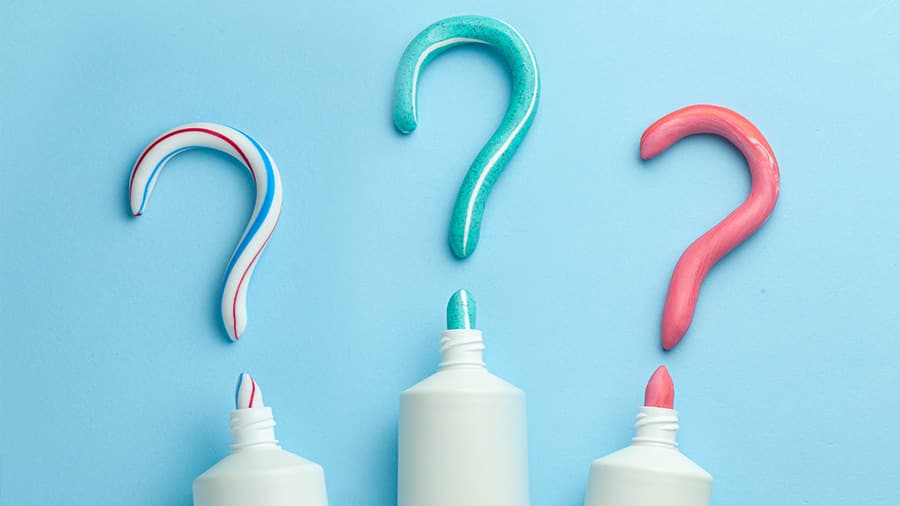What Causes Black Stains on Teeth?
Black stains appear as dark lines or incomplete collections of dark spots, mainly located on the lower third of the tooth, near the gum line. Black stains on teeth cause aesthetic and oral health issues, often stemming from poor oral hygiene, tobacco use, certain foods, or specific medications. There are two main categories of black stains on teeth: extrinsic and intrinsic stains.
Extrinsic stains are stains that occur on the surface of the tooth enamel. They are the most common types of black stains, and they include staining, tartar, or other damage that affects the tooth enamel.
Intrinsic stains are stains that originate from within the tooth. These stains are less common than extrinsic stains and can be more difficult to remove.
Extrinsic causes (external factors):
Poor oral hygiene: Lack of proper brushing and flossing can lead to the buildup of dental plaque and stains on the teeth, causing them to appear black or discoloured.
Tobacco use: Smoking or chewing tobacco products can stain the teeth and cause discolouration, often leading to a dark or blackish appearance.
Certain foods and beverages: Consuming highly pigmented foods and drinks, such as coffee, tea, red wine, and deeply coloured sauces or berries, can contribute to tooth discoloration and black stains over time.
Certain medications: Antibiotics like tetracycline, taken during tooth development, can cause tooth discolouration, including a greyish-black appearance.
Intrinsic causes (internal factors):
Tooth injury or trauma: Severe trauma or injury to the tooth can damage or kill the internal tooth structure (pulp), resulting in discolouration and a blackish appearance.
Tooth decay or cavities: Advanced tooth decay or cavities that reach the inner layers of the tooth can cause dark or black discolouration as the tooth structure breaks down.
Dental restorations: Certain dental materials, like amalgam (silver) fillings or metal crowns, can sometimes cause the tooth surface to become greyish or blackish over time.
Genetic disorders: Some genetic conditions can affect the development and structure of teeth, leading to discolouration, including black or greyish teeth.
While some teeth discolouration may be harmless, it's always best to seek professional advice. A dentist can help determine the underlying cause of black teeth and provide appropriate treatment, if necessary. This underscores the importance of professional dental care in maintaining good oral health and a bright smile.
What Are The Symptoms of Black Stain on Teeth?
The symptoms of black stains on teeth can vary depending on whether the cause is extrinsic (from the surface) or intrinsic (from within the tooth). Here's a breakdown:
Extrinsic Stains:
Appearance: Black spots or discolouration on the surface of the tooth, often starting near the gum line or around cracks/chips. The stains might be concentrated or appear scattered.
Progression: The stains may gradually worsen over time, possibly growing larger or darker.
Intrinsic Stains:
Appearance: Discoloration usually starts within the tooth and spreads outwards, making the entire tooth appear black or dark brown.
Sensitivity: In some cases, the tooth might become sensitive to hot or cold due to underlying dental decay.
Pain: If the black stain is caused by a severe infection or dead tooth, there might be pain.
General Signs:
Noticeable Darkness: The most obvious symptom is the black discolouration on the teeth, which can be quite noticeable, especially when smiling or laughing.
Uneven Surface: Depending on the cause, the surface of the stained tooth might feel rough or uneven.
Treatment Options For Black Stains on Teeth
Have you ever asked your dentist or dental hygienist, ‘How to remove black stains on my teeth?’. There are two main approaches to tackling black stains on teeth: in-office treatments performed by a dentist and at-home remedies you can try.
In-office treatment
Professional Cleaning (Scaling and Polishing): This is the most common approach for removing extrinsic stains (surface stains) caused by food, drinks, or tobacco use. The dentist uses specialised tools to remove plaque, tartar, and surface stains, revealing a brighter smile.
Teeth Whitening: For deeper stains, both extrinsic and intrinsic, professional teeth whitening treatments offer more dramatic results. Dentists use stronger bleaching agents than over-the-counter options, achieving a whiter smile in a shorter timeframe.
Dental Restorations: If the black stain is associated with a damaged filling or crown, the dentist may recommend replacing it with a tooth-coloured material to address the discolouration and restore functionality.
Veneers: In severe cases of intrinsic stains or deep discolouration, veneers can be a solution. These thin shells are bonded to the tooth's front surface, masking the black stain and creating a whiter, more uniform appearance.
Other procedures: More complex procedures like root canals or tooth extractions might be necessary for severe intrinsic stains or underlying tooth decay that has reached the dentin or underneath the tooth enamel.
Home remedies
Improved Dental Hygiene: Brushing twice daily for two minutes and flossing once daily can help remove surface stains and prevent future buildup.
Over-the-Counter Whitening Strips or Trays: These kits provide a more concentrated whitening treatment than toothpaste, but they still need to be more potent than professional options. They may offer some improvement for mild extrinsic stains but might not be practical for deeper discolouration.
Teeth Whitening Serum: For an advanced at-home solution, *Colgate Visible White Purple Serum offers an instant whitening boost*. Its deep purple formula leverages color correcting technology to instantly neutralize yellow tones upon application, providing a quick and effective way to enhance your smile's brightness without altering the tooth itself*.
Whitening Toothpaste: A whitening toothpaste containing mild abrasives or polishing agents can help remove some surface stains over time. However, results may be subtle and only work for some stains.
For instance, whitening toothpaste can remove tooth surface stains and maintain the brightness of your teeth. Advanced whitening pastes like Colgate Visible White O2 toothpaste have more advanced formulations that can go beyond surface stains and lighten deeper, more intrinsic stains. Colgate Visible White O2 has a revolutionary oxygenated whitening formula that starts whitening teeth in three days. It is also safe for tooth enamel and can be used every day.
*for temporary efficacy.
*vs brushing with Colgate non whitening toothpaste alone.
While home remedies to remove black stains on teeth can be helpful for mild extrinsic stains, it's crucial to consult a dentist for proper diagnosis and stain removal treatment. They can determine the cause of the black stains, assess the severity, and recommend the most appropriate course of action. Early detection and treatment can prevent further damage to your teeth and ensure a healthy, bright smile.
How to Prevent Black Line Stain on Teeth?
The good news is that by following a good oral care routine and making some smart dietary choices, you can significantly reduce your risk of developing black line stains on your teeth. Here are some key steps:
Brush your teeth twice daily for two minutes with fluoride toothpaste. Fluoride strengthens tooth enamel and helps prevent staining.
Flossing daily removes plaque and food particles between your teeth, where black stains can easily form.
Visit your dentist for professional cleanings and checkups at least twice a year. This allows them to remove any plaque or tartar buildup contributing to staining.
Limit your intake of stain-causing foods and drinks like coffee, tea, red wine, and dark berries. If you do consume them, rinse your mouth with water afterwards or use a straw to minimise contact with your teeth.
Consider using an antiseptic mouthwash to help reduce plaque and bacteria buildup, potentially preventing stains.
Stop smoking, as it is a major contributor to tooth staining, including black lines.
Avoid harsh brushing to prevent damage to your gums and erosion of tooth enamel, making them more susceptible to staining.
Stay hydrated throughout the day to help wash away food particles and prevent stains from setting in.
If black stains on teeth develop despite the best efforts, consult your dentist. They can determine the underlying cause and recommend the most appropriate treatment.
When to See a Dental Professional?
While some black stains on teeth may be surface-level teeth discolouration, there are instances where they could signify an underlying dental issue. Seeking professional evaluation is important when black stains do not respond to home care, indicate an underlying dental problem, or cause anxiety.
If stains persist despite good oral hygiene
The stains cause tooth sensitivity/pain
They are spreading/worsening
If stains result from tooth injury/trauma
Multiple teeth are affected
Other oral issues like gum disease accompany stains
The cause of stains is unknown or concerning
If you have black stains on teeth, it is important to see a dentist to determine the cause. In some cases, the stains may be able to be removed with professional cleaning. Treatment may be more difficult in other cases, such as with intrinsic stains. Early detection and treatment are important to prevent further damage to your teeth.
Frequently Asked Questions
- Are black stains on teeth serious?
Black tooth stains can be serious, but not always. If they are caused by food or drinks, brushing might remove them. See a dentist if brushing fails or you have pain because they can potentially lead to serious problems like tooth decay.
- What causes black spots on teeth?
Common causes of black spots on teeth are often dental cavities or stains from foods, drinks, or tobacco use. Poor oral hygiene and plaque buildup can also contribute to their development.
- Do black stains on teeth indicate tooth decay?
Black stains on teeth do not always indicate tooth decay; they can also result from external factors like certain foods, beverages, or smoking. However, if the dark stains or black spots are due to cavities, they do indicate tooth decay and should be evaluated by a dentist.
- Are black stains on teeth permanent?
Black stains on teeth are not necessarily permanent. They can often be removed with professional dental cleaning or whitening treatments, though stains caused by cavities will require dental intervention to address the decay.
This article is intended to promote understanding of and knowledge about general oral health topics. It is not intended to be a substitute for professional advice, diagnosis or treatment. Always seek the advice of your dentist or other qualified healthcare provider with any questions you may have regarding a medical condition or treatment.
ORAL HEALTH QUIZ
What's behind your smile?
Take our Oral Health assessment to get the most from your oral care routine
ORAL HEALTH QUIZ
What's behind your smile?
Take our Oral Health assessment to get the most from your oral care routine













